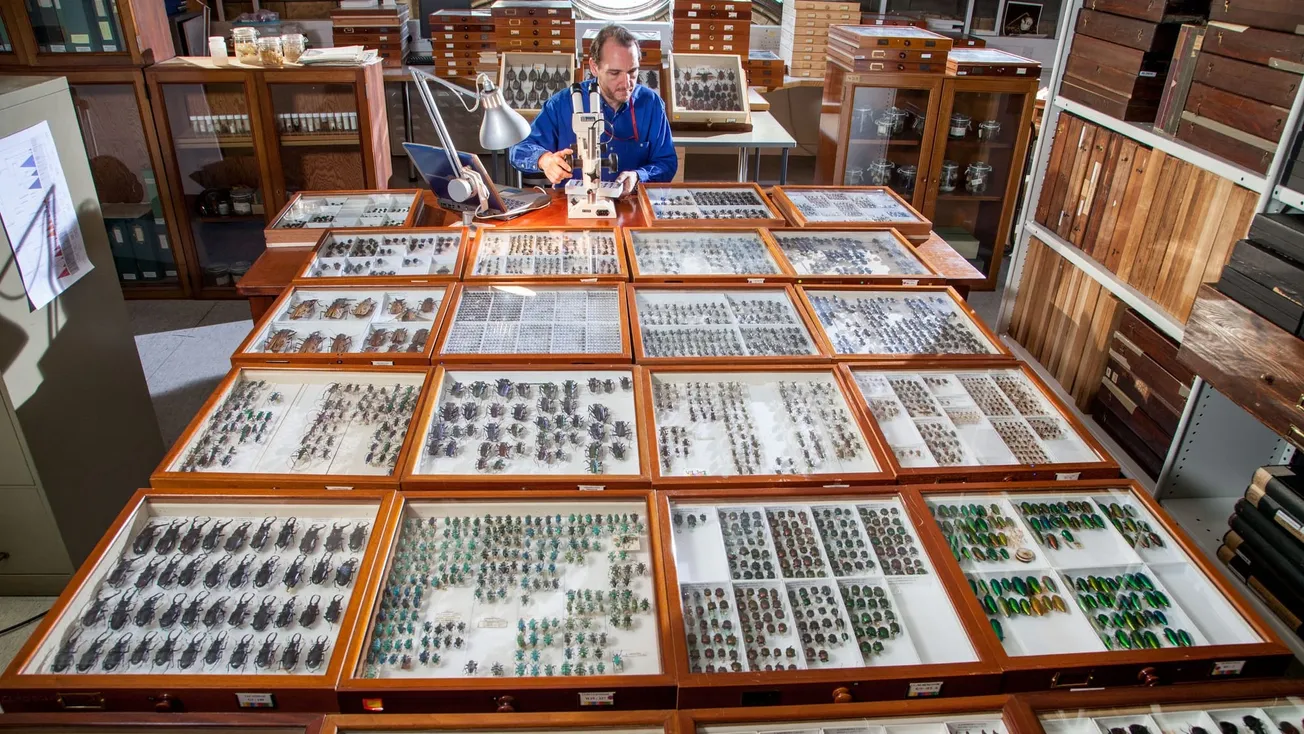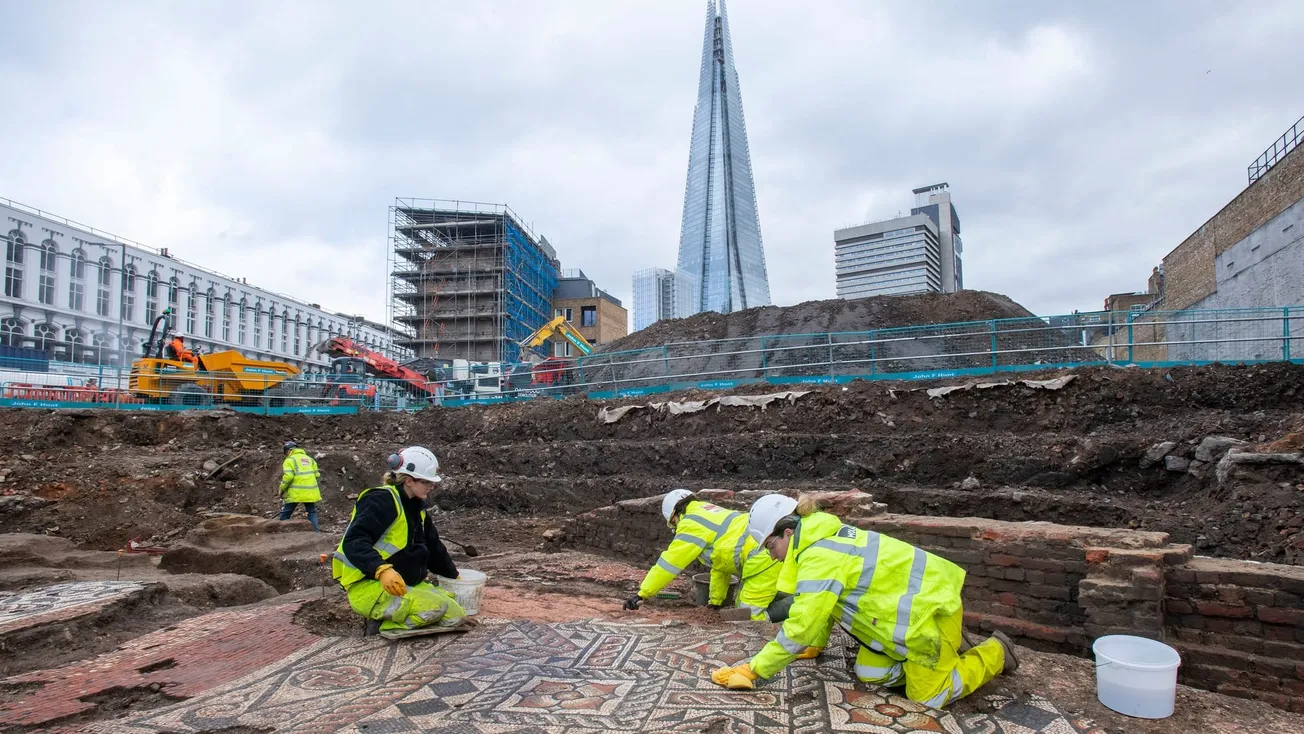Max Barclay, one of the senior curators at the Natural History Museum, is ferrying me past enormous fossils and raging rivers of school children. “We have about 14,000 people through the door on an average day”, he explains, barely audible over the noise. Eventually we arrive at a heavy side door. Barclay fumbles with the lock, which reluctantly gives way then shuts behind us and the sound disperses into silence. “This is what 27,000 boxes of beetles look like,” Barclay says, his voice echoing, “250,000 species, 9 million specimens.”
Barclay is one of Britain’s leading entomologists. Before he could talk, he was already crawling around in the undergrowth with a matchbox full of insects. As a teenager, he specialised and dedicated his life to Coleoptera (the order of insecta we call beetles — it contains more species variation than plants and vertebrate animals combined). This dedication paid off. He’s had multiple species named after him by gracious contemporaries. In 2006, Barclay was put in charge of beetle research at the museum — based in the room we’re currently standing in, a vast library of uniform filing cabinets extending down the entirety of the building's west face.

Unprompted, Barclay begins showing me around. “These are the largest beetles in the world.” he enthuses, brandishing immense armoured creatures. “They’re called Titanus giganteus, from the forests of northern South America.” Putting them aside, he removes a case of what appear to be yellow sapphires. “These are the Indochinese jewel beetles that are sometimes used for costumes.” Then he points to a case of initially innocuous looking bugs. “That’s a drawer of specimens collected by Charles Darwin on his famous Beagle voyage in the 1830s.” Darwin had an unfaltering fascination with beetles and dedicated a large part of his Cambridge degree to collecting them — rather than studying theology as his parents intended.
The Natural History Museum’s Coleoptera collection is one of the oldest and most expansive in the world; every day more species are mounted, classified and filed away in its bowels. However, since Barclay took over, the nature of British entomology, particularly London entomology, has begun to change. These days, thanks to the capital’s position as an international hub and the warming climate, Barclay is finding an increasing quantity of invasive species tucked away in London’s crevices, often in the museum garden itself. This trend, he believes, could fundamentally alter our ecosystem, with potentially catastrophic consequences.

Comments
How to comment:
If you are already a member,
click here to sign in
and leave a comment.
If you aren't a member,
sign up here
to be able to leave a comment.
To add your photo, click here to create a profile on Gravatar.






